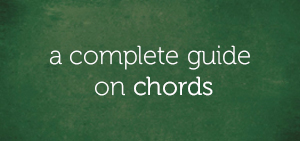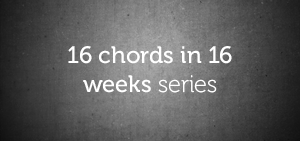 If you’re a regular reader, you know that we’ve been on minor scales and chords for about a week.
If you’re a regular reader, you know that we’ve been on minor scales and chords for about a week.
First you learned the ins and outs of the natural minor scale. Then I gave you a pop quiz on them in this post.
When you thought it was over, I introduced a minor chord progression found commonly in salsa music.
Then we took it a step further and studied harmonic minor scales.
And yesterday, we learned the melodic minor scale.
(Sorry for bombarding you with links. I just thought it’d be a good idea to catch you up just in case you missed one of my prior posts).
Today, I’m going to introduce you to the corresponding chords of the harmonic minor scale.
As you know, the harmonic minor scale is basically the same as the natural minor scale except that it has a raised 7th tone.
C natural minor
C D Eb F G Ab Bb CC harmonic minor
C D Eb F G Ab B C
You’ve already learned the corresponding chords of the natural minor scale in prior posts.
Now, let’s build the chords for the harmonic scale.
All we do is start from the first tone of the scale and play every other note. This creates block chords from only scale tones. You’ll never find tones in these chords that are outside of the harmonic minor scale (the same rule applies to the diatonic chords of the major and natural minor scales).
Let’s work in the minor key of C and start with triads (three-toned chords).
If you take every other note of the C harmonic minor scale, you’ll get these chords:
(Note: I’m using two octaves because as you get further in the scale, you’ll run out of notes)
C D Eb F G Ab B C D Eb F G Ab B C
C D Eb F G Ab B C D Eb F G Ab B C
C D Eb F G Ab B C D Eb F G Ab B C
C D Eb F G Ab B C D Eb F G Ab B C
C D Eb F G Ab B C D Eb F G Ab B C
C D Eb F G Ab B C D Eb F G Ab B C
C D Eb F G Ab B C D Eb F G Ab B C
See how I did that?
Now let’s actually analyze what these chords are:
1st tone – C minor
2nd tone – D diminished
3rd tone – Eb augmented
4th tone – F minor
5th tone – G major
6th tone – Ab major
7th tone – B diminished
Think about it…
The only chords that are different from those of the natural minor scale are the ones that include the raised 7th. So any chord that has the 7th in it is affected. All other chords are left alone.
Like the 3rd chord. In the C natural minor scale, normally it would be Eb major (Eb + G + Bb) but because the “Bb” is now raised to “B,” that makes this chord an Eb augmented chord (Eb + G + B) instead of a major chord.
Same thing with the 5th chord. In the C natural minor scale, it would be G minor (G + Bb + D) but because “Bb” is now raised to “B,” that makes this chord a G major chord (G + B + D) instead of a minor one.
And finally for the 7th chord. In the C natural minor scale, it would be Bb major (Bb + D + F) but because “Bb” is now raised to “B,” it changes the whole entire chord to B diminished (B + D + F) instead of the major chord it was.
Now keep in mind… these are just 3-fingered triads.
In my next instructional post, I’ll talk about the seventh chords of the harmonic minor scale because they change quite a bit when you add that extra tone.
For now, become a pro at these and you’ll be good to go!
Until next time.







Comments on this entry are closed.